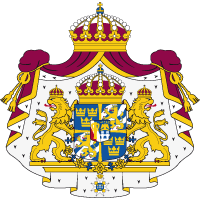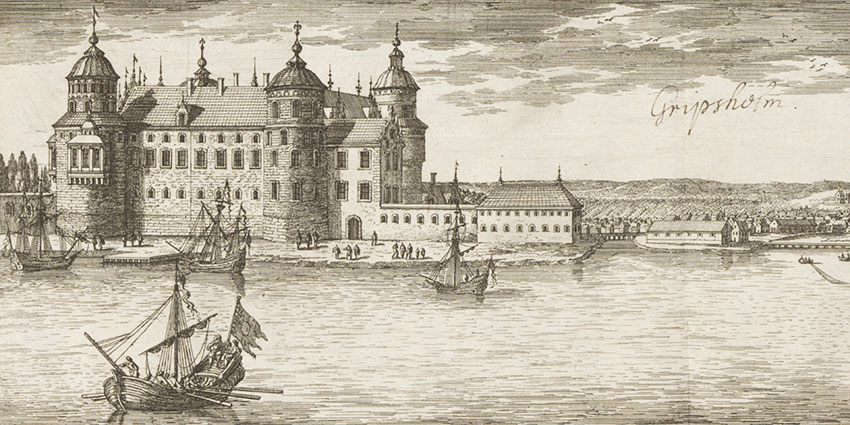
Gripsholm Castle: A history
Royal family feuds, King Gustav III's magnificent Christmas celebrations and King Gustav Vasa's home. Gripsholm Castle has no shortage of historic drama, and once you have seen the stuffed lion you will never forget it.
The solid brick castle is surrounded by the waters of Lake Mälaren, and towers above the picturesque town of Mariefred. For many people, Gripsholm Castle is the epitome of what a 'real' castle should look like, and there is a palpable sense of history as you wander through the rooms and the winding passageways.
The history of the current castle begins in 1537, when construction was started by King Gustav Vasa. However, there was already a stronghold here in the 14th century, built by Seneschal of the Realm Bo Jonsson Grip, after whom the castle was named.
Gustav Vasa's home
During the late Middle Ages, the castle was donated to a Carthusian monastery founded in Pax Marie (Mariefred). At the time of the Reformation, the monastery became state property, and in 1537 construction began on the current castle, under the direction of Henrik von Köllen. The castle became part of a new national system of defence, and was also an official residence of the Renaissance Prince Gustav Vasa. The large Hall of State, with its painted ceiling and its full-figure portrait of Gustav Vasa and his contemporary European rulers, gives a good idea of what Gripsholm Castle would have felt like at this time. The most famous 16th century room in the castle, and one of Sweden's best preserved interiors from the period, is the Duke Charles Chamber.
The imprisonment of King Erik XIV
During its history spanning almost five centuries, Gripsholm Castle has seen a great deal of drama. For example, it was here that King Erik XIV held his brother Johan (III) and Johan's wife Katarina Jagellonica prisoner from 1563 till 1567, and two of their children – Isabella and Sigismund – were born at Gripsholm. When Johan then deposed King Erik XIV in 1571, it was here that Erik, his wife Karin Månsdotter and their children were in turn held prisoner before Erik was transferred to Västerås.
Seventy years later, Queen Dowager Maria Eleonora was held here having come into conflict with the regency council and been suspected of having contact with the enemy. On the night before 22 July 1640, however, she succeeded in escaping from Gripsholm to Denmark, disguised as a member of the bourgeoisie.
"Powdered the ceiling with his wig"
It was during the time of King Gustav III that Gripsholm experienced what was perhaps its heyday, with a rich courtly life. From Gripsholm, King Gustav III wrote to his brother, Duke Karl:
"I have been here since last Tuesday, wandering among my ancestors. I imagine that I have returned to the time of King Gustav I, which fills me with indescribable pleasure."
Magnificent Christmas celebrations were held here during the time of King Gustav III, and these are described in letters and diaries. Moving the court, servants, luggage and furniture was a major undertaking, and it was recorded in 1775 that 95 horses and 21 carts were needed for transportation, including six for the king's clothes alone. Not everyone was happy to leave the comfort of the palace in Stockholm. Count von Fersen complained, in particular that he "powdered the ceiling with his wig" in the low rooms of the Cavalier Wing.
Nevertheless, on the whole the courtiers lived an agreeable life here with companionship, games such as charades and blind man's buff, reading aloud in the queen's Blue Salon and hunting, but there was also time to spend alone in peace and quiet, writing letters and reading. The evening meal was served at around nine o'clock. On one occasion in autumn 1784, the following was served:
- Soup of veal, chicken and beef
- Salted cod, veal and various birds (grouse, chicken, turkey and duck)
- Truffles and olives
- Vegetable (peas, beans and cauliflower)
- Macaroni prepared with parmesan cheese, butter and flour
- Salad of celery, lettuce, endives and ox tongue
- Pastries
- Preserves, grapes and lemons
This was all washed down with 26 bottles of wine and 14 jugs of drink.
A horse for Christmas
It has been recorded that, on several occasions, King Gustav III was driven by sledge the seventy kilometres from Gripsholm to Stockholm to buy Christmas presents, which were then given out on the afternoon of Christmas Eve. His sister-in-law Hedvig Elisabet Charlotta wrote the following about Christmas 1779:
"We have been given excellent Christmas gifts. The King has been extremely generous, and everything he has given has been of excellent taste."
For example, on this particular Christmas at Gripsholm Duke Karl received a horse, although it refused to go up the steps to the room where people were gathered.
Neoclassical masterpieces
The King had great plans for the castle, but many of the changes he envisioned never came to fruition. However, the theatre in one of the castle's towers – now known as the Theatre Tower – is one project that dates from this time. King Gustav III had the architect Carl Fredrik Adelcrantz construct a theatre in 1772-73, but this was soon deemed to be too small and insufficient, and Erik Palmstedt was commissioned to design a new one in 1781. Palmstedt's theatre is a Neoclassical masterpiece, with its ingenious combination of intimacy and monumentalism. The scenery and machinery from the time of King Gustav III have been preserved.
King Gustav IV Adolf is arrested
With the death of King Gustav III, the sparkling courtly life of Gripsholm faded. The parties, balls, games and plays were only a memory in 1809, when the castle once again found itself at the centre of a dramatic chapter in Swedish history. After Sweden had lost Finland to Russia, King Gustav IV Adolf was arrested and taken to Gripsholm Castle, where he was held under house arrest for nine months. It was also here that he signed his letter of abdication. The desk on which he wrote this letter, with its table top of ivory, mother of pearl and tortoiseshell, can be seen in the Council Chamber. In December 1809, King Gustav IV Adolf and his family left Sweden, never to return.
Modernisation and restoration
Towards the end of the 19th century, several of the rooms were modernised in line with the current fashions. The Gripsholm Association was established in 1889 and made extensive changes to the castle in stages between 1891 and 1899, according to designs by architect Fredrik Lilljekvist. The aim was to restore the castle to its 16th century appearance where possible, bringing back some of its Renaissance character. As far as possible, old details were recreated and lost details were replaced with, for example, ceilings which were certainly "of the time" but which had come from elsewhere. However, the restoration project was controversial. Many critics, such as the writer Verner von Heidenstam, felt that it went too far and mourned the loss of old layers of culture.
An unforgettable lion
Today, the castle draws large numbers of visitors who come to admire the grand rooms, to experience a sense of history and to see the large collection of portraits. Perhaps one of the castle's main attractions is the stuffed lion from the 18th century. Its present-day popularity is due to the fact that the taxidermist tasked with stuffing the lion's body had probably never seen a living lion, resulting in a stuffed lion that looks rather different to the lions we are used to seeing. Once you have seen it, you are unlikely to forget it.
Copperplate engraving of Gripsholm Castle by the draftsman Erik Dahlbergh, from the folio Suecia antiqua et hodierna. Photo: The Royal Library
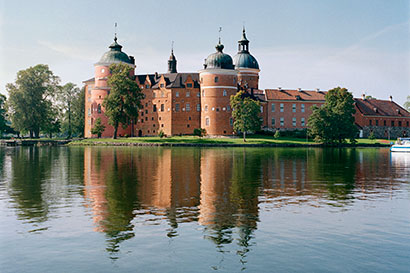
The history of the current castle begins in 1537, when construction was started by King Gustav Vasa. Photo: Alexis Daflos
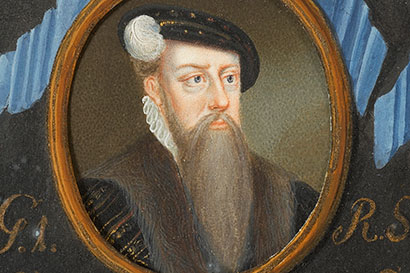
Portrait of King Gustav Vasa. Gripsholm Castle was part of Sweden's national system of defence, and was also an official residence of the Renaissance Prince Gustav Vasa. Photo: Alexis Daflos
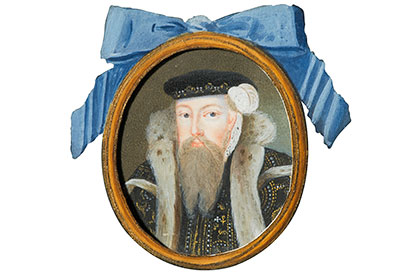
A portrait of King Erik XIV, who held his brother Johan (III) prisoner here. A few years later, Erik himself was held prisoner here together with his wife Karin Månsdotter. Photo: Alexis Daflos
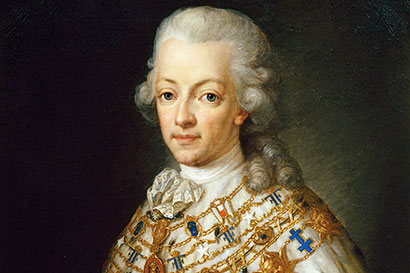
Portrait of King Gustav III. During his reign, Gripsholm experienced its heyday with magnificent Christmas celebrations. Photo: Alexis Daflos
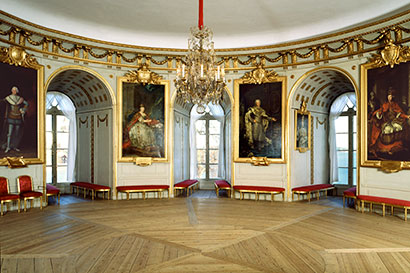
King Gustav III's Round Salon, where visitors can see portraits of King Gustav III and his contemporary rulers. The room is also called the White Salon. Photo: Alexis Daflos
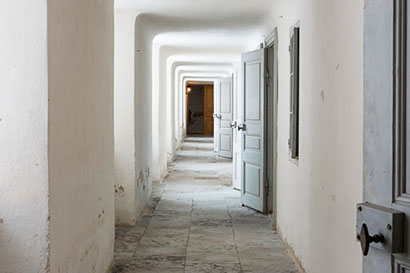
The Cavalier Wing on the third floor. Count von Fersen complained that he "powdered the ceiling with his wig" in the low rooms here.
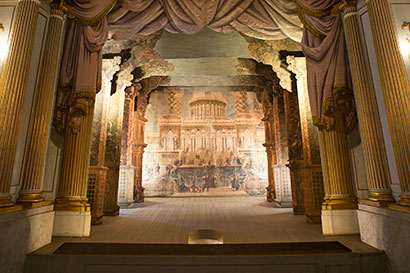
Gustav III's Theatre is one of Europe's best-preserved 18th century theatres, which the king had installed in one of the castle's round renaissance towers. Photo: Alexis Daflos
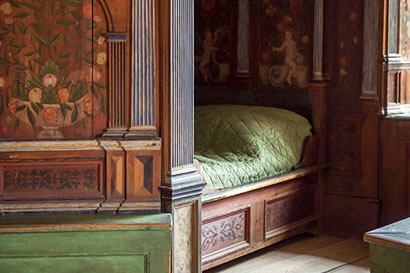
The most famous 16th century room in the castle, and one of Sweden's best preserved interiors from the period, is the Duke Charles Chamber. Photo: Alexis Daflos
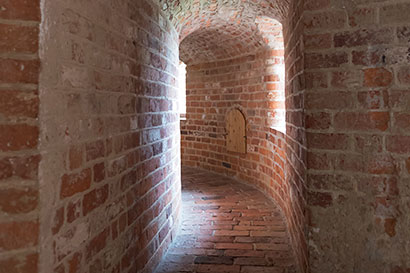
Gripsholm Castle is full of winding passageways, where there is a palpable sense of history. Photo: Kate Gabor
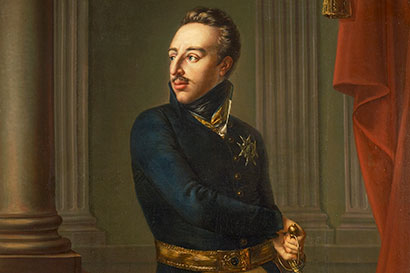
King Gustav IV Adolf was arrested and taken to Gripsholm Castle after Sweden lost Finland to Russia. It was here that he was held under house arrest for nine months and signed his letter of abdication. Photo: Alexis Daflos
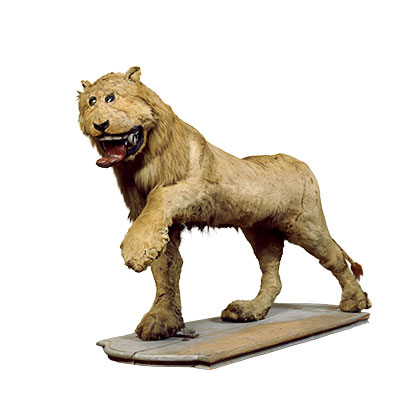
Stuffed lion. Photo: Alexis Daflos
